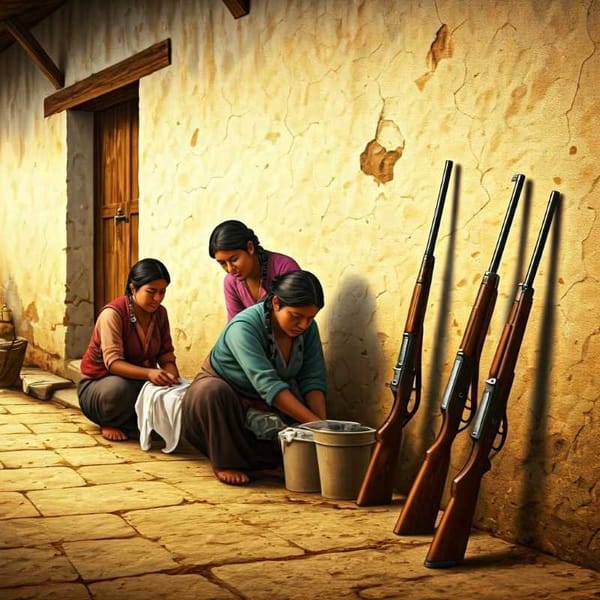Benito Messeguer's mural The Human Creation and the Economy
Benito Messeguer (1927-1982) was 35 when he began painting La creación humana y la economia in the Narciso Bassols Auditorium of the Faculty of Economics at the UNAM. He finished it in October 1963.

Benito Messeguer (1927-1982) was 35 years old when he began to paint his second mural, La creación humana y la economía, in the Narciso Bassols Auditorium of the Faculty of Economics of the UNAM (the first was La edad de oro, in the Casino de la Selva, in Cuernavaca, Morelos), and he devoted himself to it with an intense and inexhaustible passion, until he finished it in October 1963.
It belongs to the second muralist stage that took place in Ciudad Universitaria, that is, the one that came after Diego Rivera, David Alfaro Siqueiros, Juan O'Gorman, José Chávez Morado, and Francisco Eppens made large murals on the exterior walls of various buildings.
The plastic artist -born in Catalonia, Spain, but naturalized Mexican- executed The Human Creation and the Economy with acrylic paint on asbestos and cement on the side panels (west and east) of the aforementioned auditorium.
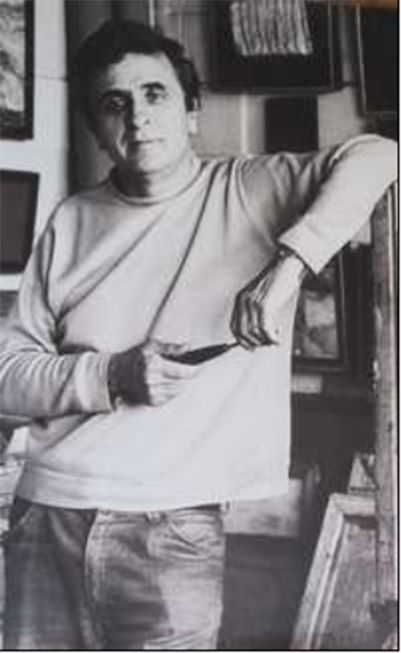
"This work, which corresponds to a period of Mexican muralism that was not as didactic or pedagogical as the initial one, begins on the west panel, where Messeguer's signature is and, also, the first dedication, whose recipients were two young economists about the same age as Messeguer: Emilio Mújica Montoya and Enrique Velasco Ibarra, who would years later, join the cabinet of President José López Portillo," reports Oscar Molina Palestina, an academic at UNAM's Center for the Teaching of Foreigners and Ph.D. in Art History.

West panel of Benito Messeguer's mural The Human Creation and the Economy
In this mural, Messeguer moved away from the classic realism of the Mexican muralists of the first stage and approached what was being done at that time in Europe and the United States; that is, a painting in which color was used as a means of expression and in which the figures were sometimes blurred.
In the first panel, from left to right, we see a nebula with the stars that give rise to the Earth and, next, the magma gushing from the volcanoes and the separation between land and water. After that, the first human shapes can be seen in the fire that people make, which is different from the random fire that comes out of volcanoes.
From this fire, we can see hands and a face that tell us how, from the manipulation of what nature gives him and his intellect, the human being builds civilization.
Past this point, we reach the middle of the panel, where Messeguer places some of the first figures made by human beings: the Venus of Willendorf, using sculpture; and a hunter of servants, inspired by images of cave paintings, who shoots an arrow that in turn launches a ray of light that is projected towards a white point.
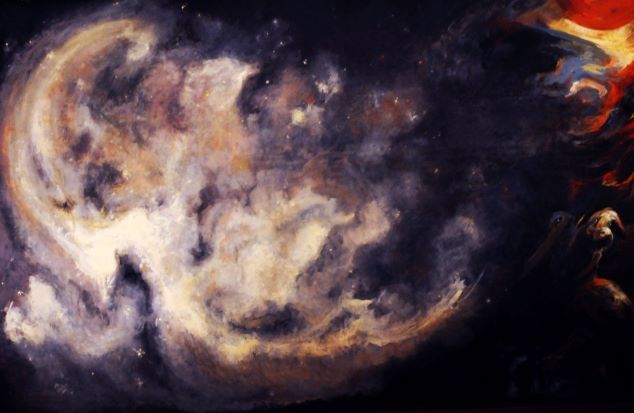
"Messeguer shows not only the production of resources that lead to the economy but also artistic creation as another of the faculties of the human being. And this is where the social-political discourse of the mural begins. On one hand, there is the Venus of Willendorf, who would be the Creative Woman who gives birth to the new societies; and on the other, man as hunter and provider of these first societies. "Behind this hunter is projected a set of arms that plow the land and that refer to an army that begins another activity that, along with the economy, will accompany the human being: war," says Molina Palestina.
Likewise, characters appear who not only hunt with their bows and arrows to feed themselves but also fight among themselves for resources. "Then we see some horses and, next to them, an obese character riding another character who advances on all fours. Both symbolize the subjugation of the human being by the human being," adds the university specialist.

East panel of Benito Messeguer's mural The Human Creation and the Economy
On the east panel, which "reads" from right to left, is the second dedication: "To my mother. Benito Messeguer. October 1963", which somehow represents the biographical part of the plastic artist incorporated into the mural's discourse.
"Sometimes, in their works, painters leave traces of their lives that later we, as researchers, collect to elucidate not only the meaning of those but also some relevant facts of their biography," says Molina Palestina.
Messeguer, who lived first-hand the first years of the Spanish Civil War (one of his brothers even went to the front), arrived in Mexico as an exile when he was only 14 years old, that is, when the Second World War had already broken out.
"Thus, from the prehistory present in the western panel, he jumps to the 20th century in the eastern panel. And although between one and the other there is a huge historical gap, what matters, Messeguer seems to tell us, is that the subjugation of the human being by the human being has been prolonged since the emergence of the first human communities until the first half of the aforementioned century."
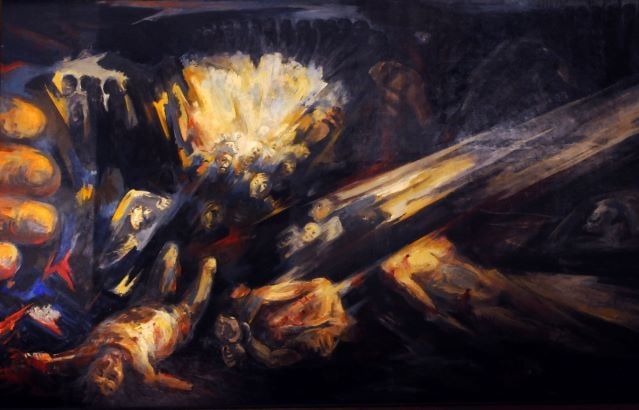
At the beginning of this second panel, a beam of light bursts out of the darkness, but it is no longer that of the nebula from which the stars that gave birth to the Earth were born; it could rather be that of a weapon.
"In reality, it is a beam of light that carries destruction and death. And we can also distinguish some somewhat stony female figures that cover their faces because they are witnesses of the horrors of war, as well as a starving character that reminds us of the character in Edvard Munch's The Scream, and bodies lying, mutilated, tied up, without heads. And above, also in the half-light, we see an army advancing with bayonets and another destructive beam of light," says the specialist.
In the middle of this panel, corresponding to the Venus of Willendorf and the servant hunter of the western panel, four figures appear with their arms open at different angles that remind us of the Vitruvian Man, by Leonardo da Vinci, and that speaks to us not only of the human being destroyer, but also of the human being creator, and several males and female faces of different races, and hands that protect them.
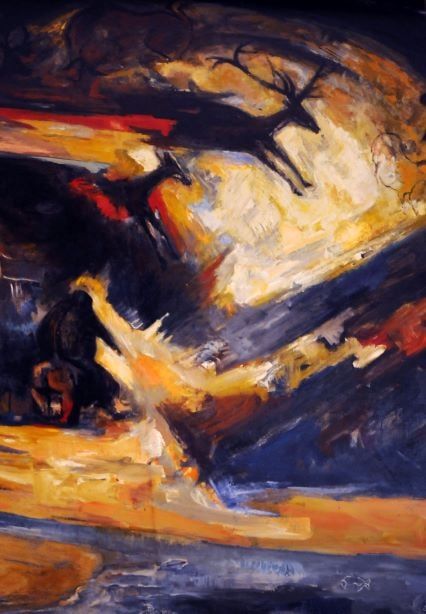
Finally, the war ends, but the totalitarian states begin. Thus, a totalitarian construction can be seen, which can be a factory or a prison wall; and below, an old couple lying down and, next to it, a boy and a girl symbolizing the future and who could change, later on, a world ruled by capitalism and communism.
"Unlike the Mexican muralists of the first stage, Messeguer did not assume a communist discourse. Instead, he presented, with a critical attitude, the two faces of the reality that was being lived at the time," says Molina Palestina.
The mural ends with a human figure with three faces and outstretched hands: on the left, he holds the symbol of the atom, which alludes to the atomic age, and with the other, he points forward, toward the future.
"In this mural, Messeguer shows us that economy and war have accompanied human beings since the beginning of civilization and that war has been part of the economy. And in a way he asks the following question: how can the new generations be formed and interrupt this inertia that we hope at some point will become positive, luminous?", concludes the specialist.




